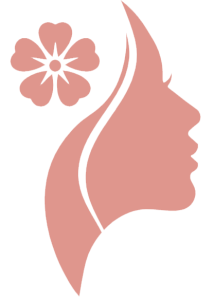Deep Tissue Massage vs Sport Massage
When it comes to bodywork and therapeutic massage, two of the most popular techniques are Deep Tissue Massage and Sports Massage. Both are known for their ability to address muscular tension, aid recovery, and improve physical performance. But while these two massage types may seem similar, they serve different purposes and are tailored to different needs.
Whether you’re recovering from a workout, dealing with chronic pain, or simply looking to improve your mobility and muscle health, understanding the difference between deep tissue massage and sports massage can help you choose the right treatment.
What Is Deep Tissue Massage?
Deep tissue massage is a technique that focuses on the deeper layers of muscles and connective tissue. It uses slow, firm pressure to target knots, chronic tension, and muscle adhesions (bands of painful, rigid tissue).
This type of massage is ideal for:
-
People with chronic pain or postural issues
-
Individuals recovering from injuries
-
Office workers with neck, back, or shoulder tension
-
Those who experience frequent stiffness or limited mobility
Techniques Used in Deep Tissue Massage:
-
Slow, gliding strokes along the muscle fibers
-
Deep finger pressure or elbow work on tight areas
-
Cross-fiber friction to break up scar tissue or adhesions
-
Focus on specific muscle groups or problem areas
The goal of deep tissue massage is not just relaxation—it’s to correct dysfunction, increase blood flow, and restore proper muscle alignment and function.
What Is Sports Massage?
Sports massage is designed specifically for athletes and active individuals. It combines elements of Swedish massage, deep tissue, stretching, and trigger point therapy to enhance athletic performance, prevent injury, and speed up recovery.
This type of massage is often used:
-
Before sports events (pre-event massage)
-
After workouts or competitions (post-event massage)
-
During training cycles for injury prevention and performance
-
For injury rehabilitation under the guidance of physiotherapists
Sports massage is highly goal-oriented and can be customized based on the type of sport, training intensity, or area of strain.
Techniques Used in Sports Massage:
-
Rhythmic compression and stretching
-
Trigger point therapy for muscle “knots”
-
Active and passive stretching
-
Myofascial release and joint mobilization
Unlike deep tissue massage, which focuses mainly on structure and chronic conditions, sports massage is dynamic and functional, supporting physical performance and recovery.
Key Differences: Deep Tissue vs. Sports Massage
Here’s a side-by-side breakdown to help clarify their differences:
| Feature | Deep Tissue Massage | Sports Massage |
|---|---|---|
| Purpose | Relieve chronic tension, correct posture, treat long-term issues | Enhance athletic performance, prevent or treat sports injuries |
| Target Audience | People with muscle stiffness, postural problems, chronic pain | Athletes, fitness enthusiasts, and physically active individuals |
| Techniques Used | Slow, deep pressure; friction across muscle fibers | Combination of techniques: deep tissue, stretching, trigger points |
| Pressure Level | Deep and focused | Varies – can be light, moderate, or deep depending on the phase (pre/post workout) |
| Area of Focus | Specific muscle groups with chronic tension | Muscle groups used in a specific sport or activity |
| Session Timing | Can be done any time for ongoing care | Often scheduled around training or athletic events |
| Results | Long-term structural correction, pain relief | Improved performance, faster recovery, reduced risk of injury |
Which One Is Better for You?
Choose Deep Tissue Massage if:
-
You have chronic back, neck, or shoulder pain
-
You suffer from poor posture, repetitive strain, or muscle imbalances
-
You sit at a desk for long hours and feel stiff or tight
-
You want to break down scar tissue or release long-held tension
-
You’re not training athletically but want to feel more mobile and relaxed
Choose Sports Massage if:
-
You’re an athlete, gym-goer, or someone who exercises regularly
-
You want to reduce the risk of injury and improve flexibility
-
You need to prepare for or recover from a physical event
-
You’re healing from a sports-related injury with help from a physiotherapist
-
You want a performance-focused approach rather than therapeutic deep work
Do They Ever Overlap?
Absolutely. In practice, deep tissue and sports massage often share techniques, and many therapists are trained to combine both approaches depending on the client’s needs.
For example:
-
A runner with tight hamstrings may receive deep tissue work on the hamstrings and calves, followed by sports massage stretching techniques.
-
A swimmer recovering from shoulder fatigue may benefit from trigger point release (common in both modalities) and assisted range-of-motion techniques.
So, while the intent and focus differ, both massage types are valuable and can complement each other in a personalized treatment plan.
What to Expect During a Session
During a Deep Tissue Massage:
-
You’ll lie on a massage table, often undressed to your comfort level.
-
The therapist will use firm pressure, and some parts may feel intense or even slightly uncomfortable (but should never be painful).
-
Communication is key—let your therapist know if the pressure is too much.
-
After the session, you may feel sore for a day or two, similar to a workout.
During a Sports Massage:
-
The session may be more interactive, with stretching and movement.
-
Pressure will vary depending on your goals: lighter for pre-event, deeper for recovery.
-
You may be asked to move limbs or engage muscles while the therapist works.
-
It’s less about relaxation and more about function, recovery, and performance.
Final Thoughts: Deep Tissue vs. Sports Massage
Both deep tissue massage and sports massage offer powerful benefits—but they serve different purposes.
If you’re someone who deals with chronic muscle tension, structural imbalances, or general tightness, deep tissue massage is your best friend.
If you’re physically active, training regularly, or focused on performance and recovery, then sports massage is the more functional and targeted approach.
Either way, working with a skilled, licensed massage therapist who understands your needs can dramatically improve your body function, recovery time, and overall well-being.


